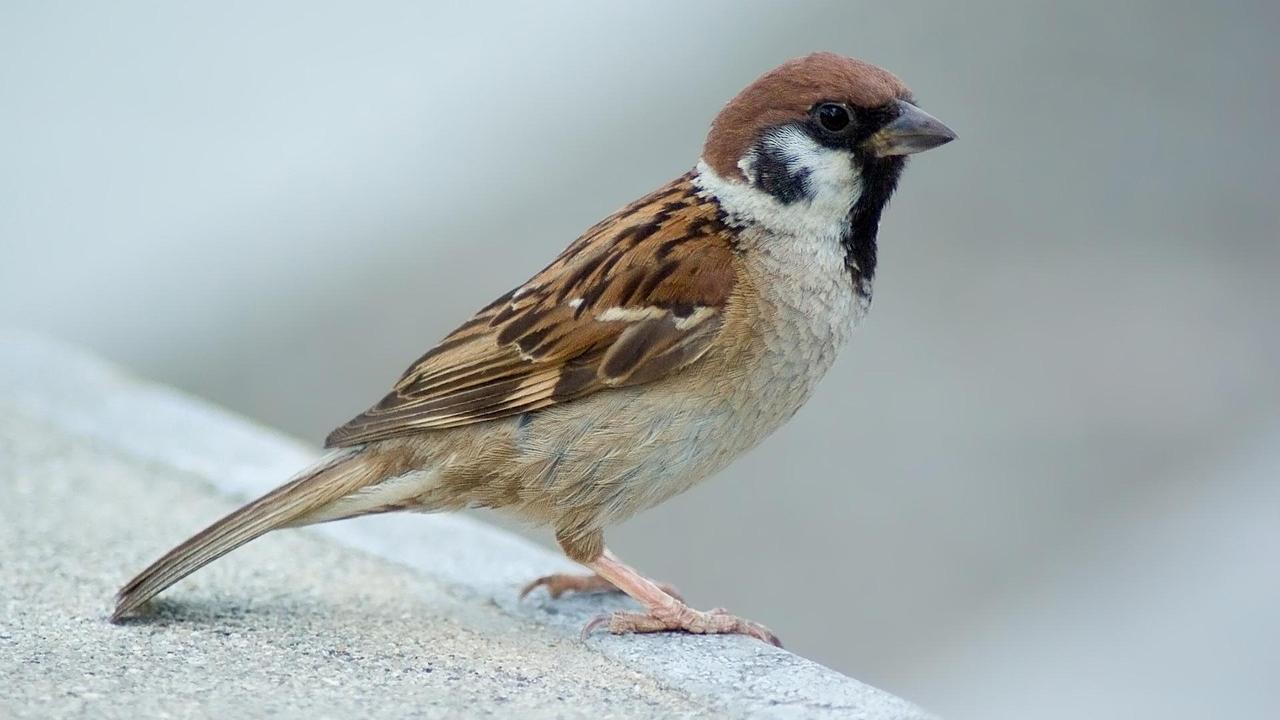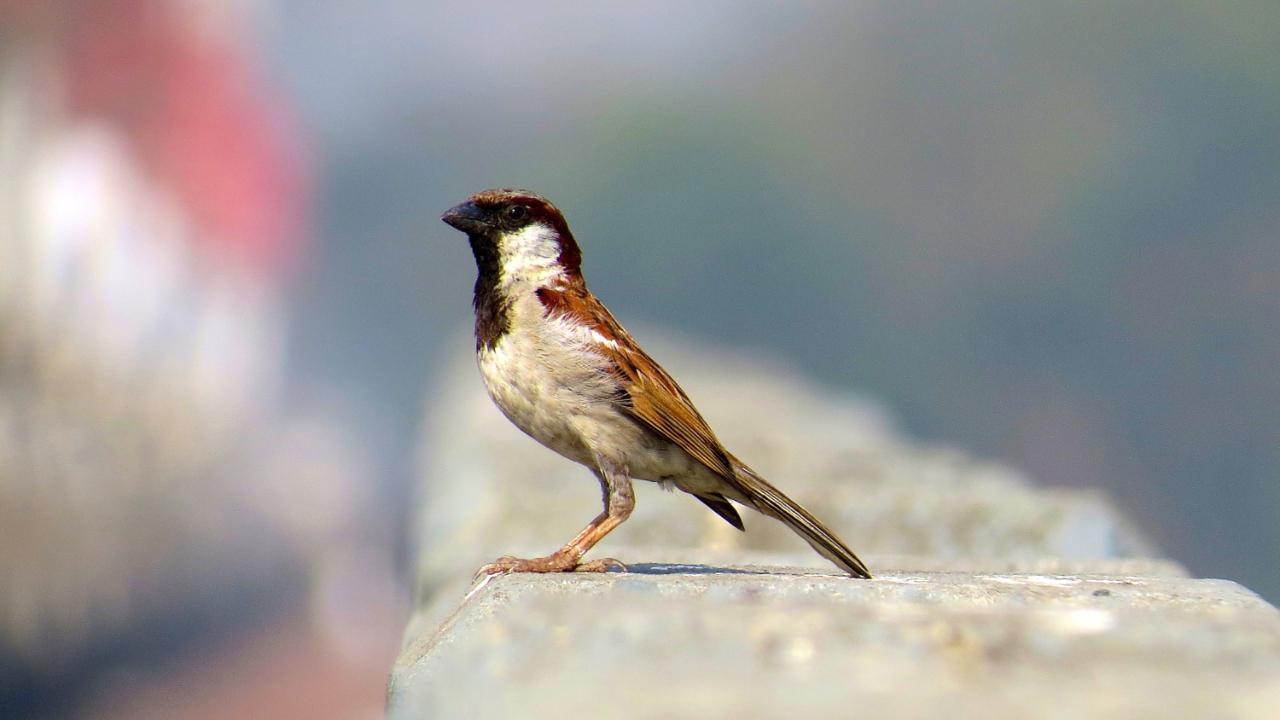Read Nature And Wildlife News
Experts warn of a water crisis as Himalayan snowfall shrinks sharply
Snow persistence or snow that usually stays on the ground between November and March was 23.6 per cent below normal levels in the Hindu Kush Himalaya (HKH) region this year, a record low in the last 23 years, according to a new report. This marks the third consecutive year of below-normal seasonal snow across the region, the International Centre for Integrated Mountain Development (ICIMOD), an intergovernmental body, said in the 2025 HKH Snow Update report published on Sunday. Snow that typically remains on the ground during winter months has been melting faster or not falling in expected amounts. This snowmelt is a crucial water source for rivers, especially during the dry season. The sharp drop in snow levels across the region could seriously affect water supply to nearly two billion people in India and neighbouring countries. ICIMOD's Director General Pema Gyamtsho said, "Carbon emissions have already locked in an irreversible course of recurrent snow anomalies in the HKH." "To tackle this regional snow crisis and the challenges it creates for long-term food, water and energy resilience, we urgently need to embrace a paradigm shift toward science-based, forward-looking policies and foster renewed regional cooperation for transboundary water management and emissions mitigation," Gyamtsho said. Sher Muhammad, remote sensing specialist at ICIMOD and the lead expert for the report, said, "We are observing such deficit situations occurring in continuous succession. This is an alarming trend. While our findings give a broad picture across the region, each must act based on the specific conditions of their river basins, particularly where seasonal snow melt is the major water source." On average, snowmelt contributes about 23 per cent to the total yearly water flow in major river basins. But this year, snow persistence was 23.6 per cent below normal levels, the lowest recorded in the past 23 years, according to ICIMOD. All 12 major river basins in the region, including those in India, China, Pakistan, Afghanistan and Southeast Asia, have recorded below-normal snow levels this year. The situation is especially dire in the Mekong and Salween basins, which recorded snow persistence levels 51.9 per cent and 48.3 per cent below normal, respectively. In India, the Ganges and Brahmaputra river systems have witnessed significant snow deficits. The Ganges basin experienced its lowest snow persistence in over two decades, at 24.1 per cent below normal, which means less snowmelt will be available in early summer, a time when demand for farming and drinking water is high. Snow persistence dropped 27.9 per cent below normal in the Brahmaputra basin, which could hit hydropower generation and agriculture hard. The Indus basin, which supports millions of people in India and Pakistan, also reported a continued decline in snow cover. While the drop in 2025 was slightly less severe than in 2024, snow persistence remained 16 per cent below normal. ICIMOD experts warned that if this trend continues, the region could face more frequent water shortages, forcing greater reliance on groundwater and raising the risk of droughts. They suggested that governments and water agencies must act swiftly by preparing water-saving plans, improving drought response, and using scientific data to manage resources more effectively. This story has been sourced from a third party syndicated feed, agencies. Mid-day accepts no responsibility or liability for its dependability, trustworthiness, reliability and data of the text. Mid-day management/mid-day.com reserves the sole right to alter, delete or remove (without notice) the content in its absolute discretion for any reason whatsoever.
21 April,2025 07:30 PM IST | New Delhi | PTIIIT-B study explores why South Asian countries face extreme heat waves
Researchers at the Indian Institute of Technology Bombay (IITB) have found different climatic drivers behind back-to-back extreme heat events experienced by South Asian countries including India, Pakistan, and Afghanistan. The study, in collaboration with a team from Johannes Gutenberg-University Mainz in Germany, focussed on unusually intense heatwave events in March and April of 2022. The team found different atmospheric processes that compounded heatwave impacts leading to temperatures far exceeding typical ranges for that time of year. "Our analysis shows that the March heatwave was primarily linked to a sudden increase in the amplitude of short-lived atmospheric Rossby waves, which are large-scale meanders in high-altitude winds resembling bends in a winding river," said lead author Roshan Jha, doctoral student at the Centre for Climate Studies, IIT Bombay. "The waves grew stronger as high-altitude westerly winds near the poles (extratropical jet stream) transferred energy to westerly winds closer to the equator (subtropical jet stream) as they came closer during the heatwave," Jha added. The study, published in the Journal of Geophysical Research: Atmospheres, showed that the April heatwave happened differently. Instead of being driven by wind patterns in high altitudes, it was largely caused by very dry soil conditions and the advection of heat to India from north-western land regions of Pakistan and Afghanistan. Importantly, these dry conditions were partly created by the earlier March heatwave, which had already dried out the land through high temperatures and clear skies. The research reveals a concerning pattern: one heatwave can set the stage for another, more intense heat event in the following weeks by removing moisture from the soil. When soil becomes too dry, it creates a cycle that makes the next heatwave even worse. "Think of it like this -- when the soil has moisture, under the clear sky conditions, some of the sun's energy goes into evaporating that moisture rather than heating the air. But when the soil is already dry, all that energy goes straight into making the air hotter," explained coauthor Prof. Arpita Mondal, Associate Professor at IIT Bombay. The experts urged the need to understand these mechanisms to improve the ability to forecast and prepare for extreme heat events in South Asia. It will also enable better prediction and mitigation of the impacts of future heatwaves. This story has been sourced from a third party syndicated feed, agencies. Mid-day accepts no responsibility or liability for its dependability, trustworthiness, reliability and data of the text. Mid-day management/mid-day.com reserves the sole right to alter, delete or remove (without notice) the content in its absolute discretion for any reason whatsoever.
15 April,2025 03:35 PM IST | New Delhi | IANSIndian researchers introduce ‘toxicity standard’ of PM2.5 pollution
Researchers at the Bose Institute, an autonomous research institute under the Department of Science and Technology, showed that the toxicity value of PM2.5 experiences a sudden jump when the pollution reaches around 70 micrograms per cubic metre. The toxicity standard implies that “policies, strategies and control measures should be taken to keep PM2.5 pollution within this limit of around 70 micrograms per cubic metre, because once the PM2.5 load exceeds this value, the toxicity starts to increase rapidly and goes beyond control,” said the researchers. PM 2.5, or particulate matter with a diameter of 2.5 micrometres or smaller, is a significant air pollutant posing serious health risks, including respiratory and cardiovascular problems, and is a key indicator of air quality. The study, led by Prof. Abhijit Chatterjee, focussed on the toxicity of atmospheric aerosols over the atmosphere of Kolkata. The researchers explored how the degree of the toxicity changes with the increase in total aerosol pollution load and have studied the oxidative potential of ultrafine aerosols (PM2.5) or the potential of forming the reactive oxygen species (ROS) that are introduced to the human lung cells via inhalation of particles. The enhanced presence of the reactive oxidative species makes the natural antioxidants of human cells incapable of counteracting, leading to oxidative stress in cells. The study, published in the journal Science of The Total Environment, showed that there is a non-linear relationship between the PM2.5 pollution load and its toxicity (OP). “Up to the PM2.5 pollution load of around 70 micrograms per cubic metre, the toxicity remains unchanged. With the increase in PM2.5, the OP values show a jump and sudden rise till the PM2.5 pollution reaches around 130 micrograms per cubic metre. With the further increase in PM2.5 load exceeding 130 micrograms per cubic metre, OP values do not change much,” the team explained in the paper. Further, the researchers found that biomass/solid waste burning is the key source of PM2.5 that is enhancing the toxicity of ultrafine aerosols over Kolkata. “While the National Clean Air Programme (NCAP) has been effective in reducing and curbing various air pollution sources like road dust, constructional/demolition dust, vehicular exhaust, industrial emissions, etc. However, biomass/solid waste burning could not be kept under good control. The particles emitted from this particular source are accelerating the toxicity,” the researchers said. NCAP was launched in 2019 by the Ministry of Environment, Forest and Climate Change (MoEFCC) to combat air pollution in the country. The programme is focused on the reduction of particulate matter by 40 per cent by 2026 with respect to 2017 through strategies and action plans for 131 non-attainment cities (not attaining the National Ambient Air Quality Standard of India) in India for different states. Kolkata has been identified as one of such cities in India.
11 April,2025 06:21 PM IST | New Delhi | IANSUttarakhand's first butterfly gallery opens in Dehradun
The research branch of the Uttarakhand Forest Department has set up the State's first butterfly gallery at the Nature Education Centre in Jolly Grant, Dehradun. The gallery displays high-resolution photographs of butterflies from Uttarakhand, providing visitors with an engaging display of these unique species. The gallery serves as an educational and awareness platform, highlighting the ecological importance of butterflies in pollination, food chains, and overall ecosystem health. Mukul Sonal, Forest Range Officer, told ANI that the butterfly gallery is of great benefit to those who study butterflies. "Uttarakhand is home to around 500 species of butterflies. Here, we have high-resolution displays of 105 of them. The lifecycle of butterflies is demonstrated here. Also, the migration of Munnar butterflies from one generation to the next is displayed with locations. The mud-puddling behaviour modelling of a butterfly, where butterflies take sodium from mud for reproduction, is also demonstrated here," Sonal said. "Uttarakhand's State butterfly is the Common peacock. Here, its structure is displayed along with that of the Munnar butterfly. We have also kept specimens of important butterflies in Uttarakhand. Those who study butterflies can benefit from this. This gallery is open to the public," Sonal added. The butterfly gallery is an effort to highlight Uttarakhand's remarkable butterfly diversity and promote greater appreciation for these ecologically important species. By educating visitors about their role in the ecosystem, the gallery aims to encourage conservation efforts and raise awareness about their protection, said officials. Uttarakhand is home to around 500 species of butterflies. The gallery displays 105 butterfly species from five different families- Papilionidae, Hesperiidae, Lycaenidae, Nymphalidae, and Pieridae. Of the 1318 species of butterflies reported from India, over 460 species have been recorded in Uttarakhand. This vast variety of butterflies, greater than the total variety of butterflies found in peninsular India or the whole of Europe, inhabit different types of forests, which are found at different elevations. The best time to see butterflies in Uttarakhand is between April and June in the lower Himalayas, July and August in the high Himalayas and the trans-Himalayan area, and again September to November at medium and low elevations. In Uttarakhand, butterflies have been reported up to an elevation of 5,800 meters. At such an elevation, air is thin, and only a few species can survive. In some cases, the strikingly beautiful colours of butterflies signal the fact that they are poisonous; some brightly coloured butterflies that are not poisonous mimic poisonous species. Some species also camouflage themselves as a strategy to save themselves from predation. The state butterfly of Uttarakhand is Papilio polyctor, which is known as the Common Peacock. This story has been sourced from a third party syndicated feed, agencies. Mid-day accepts no responsibility or liability for its dependability, trustworthiness, reliability and data of the text. Mid-day management/mid-day.com reserves the sole right to alter, delete or remove (without notice) the content in its absolute discretion for any reason whatsoever
10 April,2025 09:05 AM IST | Dehradun | ANIScientists genetically engineer wolves with white hair like extinct dire wolf
Three genetically engineered wolves that may resemble extinct dire wolves are trotting, sleeping and howling in an undisclosed secure location in the US, according to the company that aims to bring back lost species. The wolf pups, which range in age from three to six months old, have long white hair, muscular jaws and already weigh in at around 80 pounds on track to reach 140 pounds at maturity, researchers at Colossal Biosciences reported Monday. Dire wolves, which went extinct more than 10,000 years old, are much larger than gray wolves, their closest living relatives today. Independent scientists said this latest effort doesn't mean dire wolves are coming back to North American grasslands any time soon. "All you can do now is make something look superficially like something else" not fully revive extinct species, said Vincent Lynch, a biologist at the University at Buffalo who was not involved in the research. Colossal scientists learned about specific traits that dire wolves possessed by examining ancient DNA from fossils. The researchers studied a 13,000 year-old dire wolf tooth unearthed in Ohio and a 72,000 year-old skull fragment found in Idaho, both part of natural history museum collections. Then the scientists took blood cells from a living gray wolf and used CRISPR to genetically modify them in 20 different sites, said Colossal's chief scientist Beth Shapiro. They transferred that genetic material to an egg cell from a domestic dog. When ready, embryos were transferred to surrogates, also domestic dogs, and 62 days later the genetically engineered pups were born. Colossal has previously announced similar projects to genetically alter cells from living species to create animals resembling extinct woolly mammoths, dodos and others. Though the pups may physically resemble young dire wolves, "what they will probably never learn is the finishing move of how to kill a giant elk or a big deer," because they won't have opportunities to watch and learn from wild dire wolf parents, said Colossal's chief animal care expert Matt James. Colossal also reported today that it had cloned four red wolves using blood drawn from wild wolves of the southeastern U.S.'s critically endangered red wolf population. The aim is to bring more genetic diversity into the small population of captive red wolves, which scientists are using to breed and help save the species. This technology may have broader application for conservation of other species because it's less invasive than other techniques to clone animals, said Christopher Preston, a wildlife expert at the University of Montana who was not involved in the research. But it still requires a wild wolf to be sedated for a blood draw and that's no simple feat, he added. Colossal CEO Ben Lamm said the team met with officials from the U.S. Interior Department in late March about the project. Interior Secretary Doug Burgum praised the work on X on Monday as a ¿thrilling new era of scientific wonder¿ even as outside scientists said there are limitations to restoring the past. Whatever ecological function the dire wolf performed before it went extinct, it can't perform those functions" on today's existing landscapes, said Buffalo's Lynch. This story has been sourced from a third party syndicated feed, agencies. Mid-day accepts no responsibility or liability for its dependability, trustworthiness, reliability and data of the text. Mid-day management/mid-day.com reserves the sole right to alter, delete or remove (without notice) the content in its absolute discretion for any reason whatsoever.
09 April,2025 05:48 PM IST | Washington | PTIStudy reveals impact of ozone pollution on major Indian food crops
Ozone pollution, a lesser-known but potent threat, could drastically reduce agricultural yields in the country, according to a new study by IIT-Kharagpur. Severe risks of surface ozone pollution on India's major food crops have also been underscored in the research by Prof Jayanarayanan Kuttippurath and his team at the Centre for Ocean, River, Atmosphere and Land Sciences (CORAL), IIT-Kharagpur. The Indian and world staple food grains wheat, rice and maize are highly vulnerable to the increasing surface ozone pollution, it said. Published under the title 'Surface ozone pollution-driven risks for the yield of major food crops under future climate change scenarios in India', the study noted that to protect crop health and ensure food security, atmospheric pollution must be reduced and monitored, an IIT-Kharagpur spokesperson said. Surface ozone is a strong oxidant that damages plant tissues, leading to visible foliar injuries and reduced crop productivity. Using data from the Coupled Model Intercomparison Project phase-6 (CMIP6), the research assessed historical trends and future projections of ozone-induced yield losses in wheat, rice, and maize, he said. The findings indicate that under high-emission scenarios with insufficient mitigation, wheat yields could suffer an additional 20 per cent reduction, while rice and maize may experience losses of around seven per cent. The Indo-Gangetic Plain and Central India are particularly vulnerable, where ozone exposure could exceed safe limits by up to six times, the study showed. This could have severe consequences for global food security, as India is a major food grain exporter to several Asian and African nations, it said. Implementing effective emission reduction strategies could significantly enhance agricultural productivity and safeguard global food supplies, said the study, which has been published in the prestigious journal 'Environmental Research', the spokesperson added. This story has been sourced from a third party syndicated feed, agencies. Mid-day accepts no responsibility or liability for its dependability, trustworthiness, reliability and data of the text. Mid-day management/mid-day.com reserves the sole right to alter, delete or remove (without notice) the content in its absolute discretion for any reason whatsoever
08 April,2025 04:56 PM IST | Mumbai | PTIChanging clouds adding to climate uncertainty as the world warms
People have always studied the skies to predict the weather, but recently scientists have noticed that clouds are changing on a global scale -- posing one of the greatest challenges to understanding our warming world. Some clouds are rising higher into the atmosphere, where they trap more heat. Others are reflecting less sunlight, or shrinking and allowing more solar energy to reach Earth's surface. Scientists know this is affecting the climate, because the vital role that clouds play in warming and cooling the planet is well understood. Recent research has shown that clouds -- or rather, a lack of them -- helped drive a stunning surge in record-breaking global heat over the last two years. What is less certain is how clouds might evolve as the world warms. Will they have a dampening effect on global warming, or amplify it? And if so, by how much? "That's why clouds are the greatest challenge. Figuring them out is -- and has been -- the big roadblock," said Bjorn Stevens from the Max Planck Institute for Meteorology in Germany, who has written extensively on the subject. Cloud behaviour is notoriously complex to predict and remains a great unknown for scientists trying to accurately forecast future levels of climate change. Changes in clouds could mean that, even with the same amount of heat-trapping greenhouse gas emissions, "we could get much more warming or much less warming", said Robin Hogan, principal scientist at the European Centre for Medium-Range Weather Forecasts. "That's a big scientific uncertainty," he told AFP. With satellites and supercomputers, scientists are improving cloud modelling and slowly filling in the missing pieces of the puzzle. - Vicious cycle - Part of the difficulty is that clouds are not uniform -- they act differently depending on their type, structure and altitude. Fluffy, low-hanging clouds generally have a cooling influence. They are big and bright, blocking and bouncing back incoming sunlight. Higher, streaky ones have a warming effect, letting sunlight trickle through and absorbing heat reflected back from Earth. In recent decades, scientists have observed a growing imbalance between the amount of energy arriving, rather than leaving Earth, hinting at cloud changes. As the climate has warmed, certain clouds have drifted higher into the atmosphere where they have a stronger greenhouse effect, said Hogan. "That actually amplifies the warming," he said. This is growing evidence that lower clouds are also changing, with recent studies pointing to a marked decline of this cooling layer. Less reflective cloud exposes more of Earth's surface to sunlight and boosts warming in a "vicious feedback cycle", said climate scientist Richard Allan from the University of Reading. In March, Allan co-authored a study in the journal Environmental Research Letters that found dimmer and less extensive low-lying clouds drove a doubling of Earth's energy balance in the past 20 years, and contributed to record ocean warmth in 2023. A study in December, published in the journal Science, also identified a sharp drop in low-lying cloudiness as a likely culprit for that exceptional warming. Stevens said scientists generally agreed that Earth had become less cloudy -- but there are a number of theories about the causes. "Clouds are changing. And the question is how much of that change is natural variability -- just decadal fluctuations in cloudiness -- and how much of that is forced from the warming," he said. - No smoking gun - Another theory is that decades-long global efforts to improve air quality are altering the formation, properties and lifespan of clouds in ways that are not yet fully understood. Clouds form around aerosols -- tiny airborne particles like desert dust and sea salt carried on the wind, or pollution from human activity like burning fossil fuels. Aerosols not only help clouds take shape, but can make them more reflective. Recent research has suggested that clean air policies -- particularly a global shift to low-sulphur shipping fuel in 2020 -- reduced cloud cover and brightness, inadvertently pushing up warming. Allan said aerosols were one factor, but it was likely lower clouds were also "melting away" as the climate warmed. "My feeling is there's a combination of things. It's never one simple smoking gun," he said. New tools are chipping away at the uncertainty. Last May, European and Japanese space agencies launched EarthCARE, a revolutionary satellite capable of capturing unprecedented detail of inner cloud workings. In orbit it joins PACE -- a cutting-edge NASA satellite also studying aerosols, clouds and climate -- that lifted off just three months earlier. Other recent innovations, including in machine learning, were helping "bridge the gap" in cloud understanding, said Kara Lamb, a research scientist and aerosols expert at Columbia University. "We are seeing progress over time," she told AFP. This story has been sourced from a third party syndicated feed, agencies. Mid-day accepts no responsibility or liability for its dependability, trustworthiness, reliability and data of the text. Mid-day management/mid-day.com reserves the sole right to alter, delete or remove (without notice) the content in its absolute discretion for any reason whatsoever
28 March,2025 06:03 PM IST | Mumbai | AFPWorld's glacier mass shrank again in 2024 for third consecutive year: UN
All 19 of the world's glacier regions experienced a net loss of mass in 2024 for the third consecutive year, the United Nations said Friday, warning that saving the planet's glaciers was now a matter of "survival". Five of the last six years have seen the most rapid glacier retreat on record, the UN's World Meteorological Organization said on the inaugural World Day for Glaciers. "Preservation of glaciers is a not just an environmental, economic and societal necessity: it's a matter of survival," said WMO chief Celeste Saulo. Beyond the continental ice sheets of Greenland and Antarctica, more than 275,000 glaciers worldwide cover approximately 700,000 square kilometres (270,000 square miles), the WMO said. But they are rapidly shrinking due to climate change. "The 2024 hydrological year marked the third year in a row in which all 19 glacier regions experienced a net mass loss," the WMO said. Together, they lost 450 billion tonnes of mass, the agency said, citing new data from the Swiss-based World Glacier Monitoring Service (WGMS). It was the fourth-worst year on record, with the worst being in 2023. - Huge loss over 50 years - "From 2022-2024, we saw the largest three-year loss of glaciers on record," Saulo said. Glacier mass loss last year was relatively moderate in regions such as the Canadian Arctic and the peripheral glaciers of Greenland, but glaciers in Scandinavia, Norway's Svalbard archipelago and North Asia experienced their worst year on record. Based on a compilation of worldwide observations, the WGMS estimates that glaciers -- separate from the continental ice sheets in Greenland and Antarctica -- have lost more than 9,000 billion tonnes since records began in 1975. "This is equivalent to a huge ice block of the size of Germany with a thickness of 25 metres," said WGMS director Michael Zemp. At current rates of melting, many glaciers in western Canada and the United States, Scandinavia, central Europe, the Caucasus and New Zealand "will not survive the 21st century", the WMO said. The agency said that together with ice sheets, glaciers store around 70 percent of the world's freshwater resources, with high mountain regions acting like the world's water towers. If they disappear, that would threaten water supplies for millions of people downstream. - 'Ignoring the problem' - For the UN, the only possible response is to combat global warming by reducing greenhouse gas emissions. "We can negotiate many things in the end, but we cannot negotiate physical laws like the melting point of ice," said Stefan Uhlenbrook, the WMO's water and cryosphere director. He declined to comment on the return to office of US President Donald Trump, a climate change sceptic who has pulled the United States out of the landmark 2015 Paris climate accords. However, Uhlenbrook said that "ignoring the problem" of climate change "is maybe convenient for a short period of time", but "that will not help us to get closer to a solution". For the inaugural World Day for Glaciers, the WGMS named a US glacier as its first Glacier of the Year. The South Cascade Glacier in Washington state has been monitored continuously since the 1950s and provides one of the longest uninterrupted records of glaciological mass balance in the western hemisphere. The US Geological Survey, the government body that studies the natural environment, has measurements there going back to 1958, while WGMS's records there began even earlier, in 1952. This story has been sourced from a third party syndicated feed, agencies. Mid-day accepts no responsibility or liability for its dependability, trustworthiness, reliability and data of the text. Mid-day management/mid-day.com reserves the sole right to alter, delete or remove (without notice) the content in its absolute discretion for any reason whatsoever
22 March,2025 12:01 PM IST | Geneva | AFPVaranasi: Know about this sparrow colony built to protect the bird species
On International Sparrow Day, Atul Pandey, a resident of Kakkarmatta in Varanasi, is leading a campaign to protect the birds. Under the banner of the "Vyagr Foundation," Atul has established a Sparrow Colony as part of his efforts to save the species whose population is increasingly declining. This initiative aims to provide a safe haven for sparrows, where they can live in large numbers. The Vyagr Foundation, led by Atul Pandey, is not only focused on raising awareness about sparrow conservation but also directly helping the birds. As part of this effort, the foundation distributes wooden birdhouses and earthen pots as gifts during events like birthdays, weddings, and even death rituals. The goal is to encourage people to contribute to sparrow conservation by placing these nests in their homes and spreading the message of saving sparrows. Speaking to IANS, Atul Pandey shared his motivation for the project: "I am the founder of Vyagr Foundation. I am originally from Deoria, and during my childhood, I remember the chirping of sparrows filling the air in our village. However, as urbanisation has spread, especially in cities with concrete jungles, we rarely hear sparrows anymore. This is a matter of concern for us, and that’s why we initiated this project to protect sparrows." "We began by distributing wooden birdhouses and earthen pots across the country and even abroad. These are being given free of cost on various occasions, such as birthdays, anniversaries, and even during mourning ceremonies. We aim to increase awareness and give people the tools to help sparrows thrive," he told IANS. Atul also discussed the formation of the Sparrow Colony, now celebrating its 10th anniversary. "The Sparrow Colony was established before the Vyagr Foundation was officially founded in 2018, and we are now marking its 10th anniversary. We have created a safe environment for the sparrows here, with small houses, a netted area for them to fly and play in, and cleaning facilities. To make the environment more eco-friendly, we have developed an oxygen park with neem, peepal, and bamboo plants, which are highly oxygenated and beneficial for the birds." Atul’s initiative is being praised for its unique approach to sparrow conservation, especially in urban areas where the population of these small birds has been rapidly declining. His efforts are reaching far and wide, with people across the country and even abroad now becoming aware of the importance of saving sparrows. Another member of the foundation, Jayant Singh, commended Atul Pandey's work, saying, "The attempt to spread awareness for the protection of sparrows is admirable. He has created nests and environments in many places, giving sparrows a chance to grow and thrive. His contribution to sparrow conservation is significant, and his efforts are spreading awareness to distant places about preserving these birds." With ongoing efforts and a growing community, the Vyagr Foundation is making strides in sparrow conservation, fostering a more bird-friendly environment, and encouraging future generations to join the cause. This story has been sourced from a third party syndicated feed, agencies. Mid-day accepts no responsibility or liability for its dependability, trustworthiness, reliability and data of the text. Mid-day management/mid-day.com reserves the sole right to alter, delete or remove (without notice) the content in its absolute discretion for any reason whatsoever
20 March,2025 02:43 PM IST | Varanasi | IANSWorld Sparrow Day 2025: Odisha artist commemorates the day with Rangoli artwork
To commemorate World Sparrow Day on March 20, Odisha-based artist Satya Narayan Maharana created a vibrant Rangoli artwork featuring two beautiful sparrows with the message "Save Sparrow" written below. Maharana has also urged everyone to take responsibility for conserving these birds and ensuring their safety. He emphasised the importance of providing food, water, and building safe homes for them. "Today is World Sparrow Day, and it's our responsibility to ensure their safety. We should take steps to protect them by providing food, water, and building safe homes for them," Maharana said. World Sparrow Day, celebrated every year on March 20, aims to raise awareness and promote the protection of these small yet significant creatures. "Today is World Sparrow Day, and it's our responsibility to ensure their safety. We should take steps to protect them by providing food, water, and building safe homes for them," Maharana said. World Sparrow Day is celebrated every year on March 20, to raise awareness and protect these small creatures. World Sparrow Day was initiated by "Nature Forever," a bird conservation organization in 2010. The aim was to raise awareness about the declining sparrow population. The event has spread to over 50 countries. The goal is to protect sparrows and stop their decline. In 2012, the house sparrow became Delhi's state bird. Since then, the event has gained global attention. People everywhere celebrate sparrows and work to protect them, as per a Ministry of Environment release. Sparrows are small but significant birds that play an essential role in maintaining ecological balance. They help control insect populations by feeding on various bugs and pests. Additionally, sparrows are key players in pollination and seed dispersal. Their presence enhances biodiversity, making them crucial for the health of both rural and urban ecosystems, the release read. Despite their importance, sparrows have been disappearing at an alarming rate. Several factors contribute to this decline. The use of unleaded petrol has led to toxic compounds that harm the insects, sparrows depend on for food. Urbanization has also taken away their natural nesting spaces. Modern buildings lack the spaces sparrows need for nesting, reducing places to raise their young, the release added.
20 March,2025 09:55 AM IST | Ganjam (Odisha) | ANIGenetic study estimates 51 rare Asian elephants in Cambodia's northern plains
The first-ever genetic study of endangered Asian elephants has been conducted in Cambodia's northern plains, estimating that the population of the mammals in the region was 51, said a Fauna & Flora Cambodia's press release on Thursday. Conducted by Fauna & Flora in collaboration with the Ministry of Environment, the study was carried out during the 2020-2021 dry season and utilised non-invasive genetic sampling techniques across three key protected areas: Prey Lang, Preah Roka, and Chhaeb Wildlife Sanctuaries, the press release said. The genetic research was performed at the Royal University of Phnom Penh with technical support from the Royal Zoological Society of Scotland, it added. "The researchers estimated a population of 51 elephants in the region, larger than previous local estimates suggested," the press release said. While smaller than Cambodia's primary elephant populations in the Cardamom Mountains and Eastern Plains, which support 200-300 individuals, the Prey Lang Extended Landscape population exhibits high genetic diversity, a critical factor for long-term viability, it added. Listed as endangered on the International Union for Conservation of Nature (IUCN) Red List, Asian elephants (Elephas maximus) are some of the largest mammals on the planet. Pablo Sinovas, country director of the Fauna & Flora Cambodia Programme, said that in this study, researchers combined molecular and spatial modelling techniques to assess the population size, genetic diversity, and habitat availability of an important yet imperilled group of Asian elephants in Cambodia. "Despite its small size, this population retains high levels of genetic diversity, an essential foundation for long-term survival," he said. Alex Ball, WildGenes conservation manager for the Royal Zoological Society of Scotland, said that having a high level of genetic diversity within a population is fundamental to its long-term future, Xinhua news agency reported. "We now hope to expand this methodology across Cambodia and beyond, helping to build a clearer picture of Asian elephant numbers, which will inform how best we can work to help reverse the decline of these spectacular animals," he said. It is estimated that there are currently 400 to 600 Asian elephants in the wild in Cambodia, the press release said. The study's findings underscore the potential of the Prey Lang Extended Landscape to become a national stronghold for Asian elephants, significantly contributing to Cambodia's biodiversity conservation goals, it added.
14 March,2025 10:31 AM IST | Phnom Penh (Cambodia) | IANS













